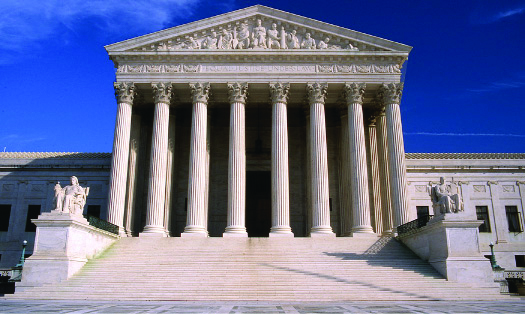| << Chapter < Page | Chapter >> Page > |
This public site maintained by the Administrative Office of the U.S. Courts provides detailed information from and about the judicial branch.
Starting in New York in 1790, the early
Supreme Court focused on establishing its rules and procedures and perhaps trying to carve its place as the new government’s third branch. However, given the difficulty of getting all the justices even to show up, and with no permanent home or building of its own for decades, finding its footing in the early days proved to be a monumental task. Even when the federal government moved to the nation’s capital in 1800, the Court had to share space with Congress in the Capitol building. This ultimately meant that “the high bench crept into an undignified committee room in the Capitol beneath the House Chamber.”
It was not until the Court’s 146th year of operation that Congress, at the urging of Chief Justice—and former president—William Howard
Taft , provided the designation and funding for the Supreme Court’s own building, “on a scale in keeping with the importance and dignity of the Court and the Judiciary as a coequal, independent branch of the federal government.”

But it took years for the Court to get to that point, and it faced a number of setbacks on the way to such recognition. In their first case of significance,
Chisholm v. Georgia (1793), the justices ruled that the federal courts could hear cases brought by a citizen of one state against a citizen of another state, and that
Article III , Section 2, of the Constitution did not protect the states from facing such an interstate lawsuit.
In an atmosphere of perceived weakness, the first chief justice, John
Jay , an author of
The
Federalist Papers and appointed by President George Washington, resigned his post to become governor of New York and later declined President John Adams’s offer of a subsequent term.

Notification Switch
Would you like to follow the 'American government' conversation and receive update notifications?